My
List |
Addition Date
|
Target
|
Mission
|
Instrument
|
Size
|

|
2007-04-02 |
Io
|
New Horizons
|
LORRI
|
500x256x1 |
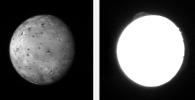
|
-
PIA09244:
-
An Eruption on Io
Full Resolution:
TIFF
(128.4 kB)
JPEG
(9.155 kB)
|

|
2007-04-02 |
Ganymede
|
New Horizons
|
LORRI
|
380x380x1 |
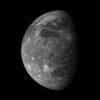
|
-
PIA09245:
-
Ganymede
Full Resolution:
TIFF
(144.8 kB)
JPEG
(8.728 kB)
|

|
2007-04-02 |
Europa
|
New Horizons
|
LORRI
|
256x256x1 |
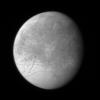
|
-
PIA09246:
-
Europa
Full Resolution:
TIFF
(65.83 kB)
JPEG
(4.904 kB)
|

|
2007-04-02 |
Jupiter
|
New Horizons
|
LORRI
|
1740x1940x1 |

|
-
PIA09247:
-
The Little Red Spot: Closest View Yet
Full Resolution:
TIFF
(3.38 MB)
JPEG
(183.6 kB)
|

|
2007-04-02 |
Io
|
New Horizons
|
LORRI
|
420x420x1 |
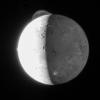
|
-
PIA09248:
-
Tvashtar's Plume
Full Resolution:
TIFF
(176.8 kB)
JPEG
(13.89 kB)
|

|
2007-04-02 |
J Rings
|
New Horizons
|
LORRI
|
835x626x1 |
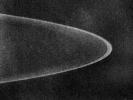
|
-
PIA09249:
-
Jupiter's Rings
Full Resolution:
TIFF
(523.5 kB)
JPEG
(106.2 kB)
|

|
2007-04-02 |
Io
|
New Horizons
|
LORRI
|
498x494x1 |
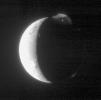
|
-
PIA09250:
-
A Brilliant Plume
Full Resolution:
TIFF
(246.5 kB)
JPEG
(40.15 kB)
|

|
2007-04-02 |
Jupiter
|
New Horizons
|
LORRI
|
1818x1899x1 |

|
-
PIA09253:
-
LORRI Takes an Even Closer Look at the Little Red Spot
Full Resolution:
TIFF
(3.456 MB)
JPEG
(273 kB)
|

|
2007-04-09 |
Callisto
|
New Horizons
|
LORRI
|
500x302x1 |
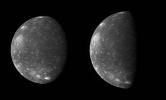
|
-
PIA09258:
-
Capturing Callisto
Full Resolution:
TIFF
(151.4 kB)
JPEG
(10.6 kB)
|

|
2007-05-01 |
Jupiter
|
New Horizons
|
LORRI
|
962x682x3 |
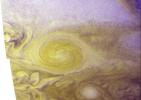
|
-
PIA09341:
-
Best Color Image of Jupiter's Little Red Spot
Full Resolution:
TIFF
(1.971 MB)
JPEG
(80.41 kB)
|

|
2007-05-01 |
Jupiter
|
New Horizons
|
LORRI
|
3000x2025x1 |
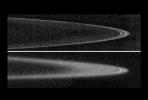
|
-
PIA09342:
-
Jupiter's Rings: Sharpest View
Full Resolution:
TIFF
(6.083 MB)
JPEG
(482.6 kB)
|

|
2007-05-01 |
Jupiter
|
New Horizons
|
LORRI
|
3000x2025x1 |
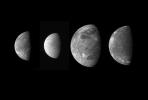
|
-
PIA09352:
-
Jupiter's Moons: Family Portrait
Full Resolution:
TIFF
(6.083 MB)
JPEG
(180.2 kB)
|

|
2007-05-01 |
Io
|
New Horizons
|
LORRI
|
343x339x1 |
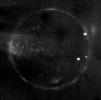
|
-
PIA09353:
-
Io in Eclipse
Full Resolution:
TIFF
(116.6 kB)
JPEG
(23.11 kB)
|

|
2007-05-01 |
Io
|
New Horizons
|
LORRI
|
179x179x1 |
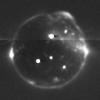
|
-
PIA09354:
-
Io in Eclipse 2
Full Resolution:
TIFF
(32.3 kB)
JPEG
(3.46 kB)
|

|
2007-05-01 |
Io
|
New Horizons
|
LORRI
|
496x370x3 |
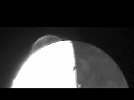
|
-
PIA09357:
-
Tvashtar Movie

Full Resolution:
TIFF
(183.9 kB)
JPEG
(7.658 kB)
|

|
2007-05-01 |
Io
|
New Horizons
|
LORRI
|
399x852x1 |

|
-
PIA09359:
-
Tvashtar Composite
Full Resolution:
TIFF
(340.5 kB)
JPEG
(20.64 kB)
|

|
2007-05-01 |
Io
|
New Horizons
|
LORRI
|
399x397x1 |
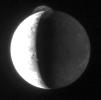
|
-
PIA09360:
-
A "Plumefall" on Io
Full Resolution:
TIFF
(158.8 kB)
JPEG
(12.02 kB)
|

|
2007-05-01 |
Europa
|
New Horizons
|
LORRI
|
1019x816x1 |
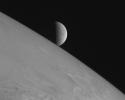
|
-
PIA09361:
-
Europa Rising
Full Resolution:
TIFF
(832.6 kB)
JPEG
(45.75 kB)
|

|
2007-05-14 |
Io
|
New Horizons
|
LORRI
|
512x512x1 |
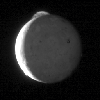
|
-
PIA09665:
-
Tvashtar in Motion

Full Resolution:
TIFF
(262.6 kB)
JPEG
(21.13 kB)
|

|
2007-05-01 |
Jupiter
|
New Horizons
|
LORRI
|
494x366x1 |
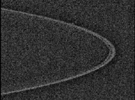
|
-
PIA09921:
-
Shepherd Moons

Full Resolution:
TIFF
(181.2 kB)
JPEG
(44.59 kB)
|

|
2007-10-09 |
Jupiter
|
New Horizons
|
LORRI
|
960x720x1 |
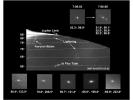
|
-
PIA10096:
-
Polar Lightning on Jupiter
Full Resolution:
TIFF
(692.2 kB)
JPEG
(61.38 kB)
|

|
2010-07-27 |
Jupiter
|
New Horizons
|
LORRI
|
650x650x3 |
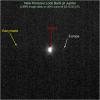
|
-
PIA07934:
-
LORRI Looks Back
Full Resolution:
TIFF
(1.268 MB)
JPEG
(84.72 kB)
|

|
2007-05-01 |
Io
|
New Horizons
|
LORRI
Solid-State Imaging
|
3000x2025x3 |
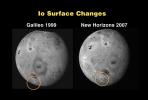
|
-
PIA09355:
-
Io Surface Changes
Full Resolution:
TIFF
(18.23 MB)
JPEG
(261.5 kB)
|

|
2007-10-09 |
Io
|
New Horizons
|
LORRI
Ultraviolet Light
|
504x720x3 |

|
-
PIA10101:
-
Tvashtar Montage
Full Resolution:
TIFF
(1.09 MB)
JPEG
(63.22 kB)
|

|
2003-02-27 |
Jupiter
|
Cassini-Huygens
|
MIMI
|
959x981x3 |

|
-
PIA04432:
-
Massive Gas Cloud Around Jupiter
Full Resolution:
TIFF
(544.7 kB)
JPEG
(24.23 kB)
|

|
2003-02-27 |
Jupiter
|
Cassini-Huygens
|
MIMI
|
1500x1125x3 |
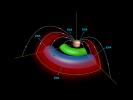
|
-
PIA04433:
-
Jupiter Torus Diagram
Full Resolution:
TIFF
(1.182 MB)
JPEG
(120.2 kB)
|

|
2003-05-22 |
Jupiter
|
Mars Global Surveyor (MGS)
|
Mars Orbiter Camera (MOC)
|
4655x961x3 |

|
-
PIA04532:
Jupiter and its Galilean Satellites as viewed from Mars
Full Resolution:
TIFF
(416.5 kB)
JPEG
(76.11 kB)
|

|
2016-10-19 |
Jupiter
|
Juno
|
Microwave Radiometer (MWR)
|
648x610x3 |
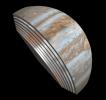
|
-
PIA21107:
-
Juno's First Slice of Jupiter
Full Resolution:
TIFF
(547.7 kB)
JPEG
(35.15 kB)
|

|
2021-10-28 |
Jupiter
|
Juno
|
Microwave Radiometer (MWR)
|
960x540x3 |
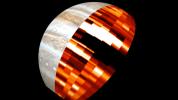
|
-
PIA24961:
-
Jupiter's Appearance in Microwave Light
Full Resolution:
TIFF
(592.5 kB)
JPEG
(38.66 kB)
|

|
2021-10-28 |
Jupiter
|
Juno
|
Microwave Radiometer (MWR)
|
634x505x3 |
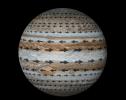
|
-
PIA24964:
-
Jets at Jupiter
Full Resolution:
TIFF
(523.8 kB)
JPEG
(37.15 kB)
|

|
2017-05-25 |
Jupiter
|
Juno
|
Microwave Radiometer
|
6144x3375x3 |
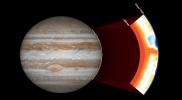
|
-
PIA21642:
-
Under Jupiter's Cloud Tops
Full Resolution:
TIFF
(18.18 MB)
JPEG
(635.8 kB)
|

|
2007-04-02 |
Io
|
New Horizons
|
MVIC
|
249x235x3 |
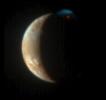
|
-
PIA09254:
-
A Burst of Color
Full Resolution:
TIFF
(176 kB)
JPEG
(3.888 kB)
|

|
2007-04-09 |
Jupiter
|
New Horizons
|
MVIC
|
419x307x3 |
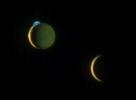
|
-
PIA09256:
-
Two Moons Meet over Jupiter
Full Resolution:
TIFF
(386.6 kB)
JPEG
(4.974 kB)
|

|
2007-04-17 |
Io
|
New Horizons
|
MVIC
|
386x199x3 |
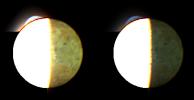
|
-
PIA09264:
-
The Colors of the Night
Full Resolution:
TIFF
(230.9 kB)
JPEG
(6.903 kB)
|

|
2007-05-01 |
Jupiter
|
New Horizons
|
MVIC
|
2293x3401x1 |

|
-
PIA09339:
-
Jupiter's High-Altitude Clouds
Full Resolution:
TIFF
(7.808 MB)
JPEG
(288.3 kB)
|

|
2007-10-09 |
Jupiter
|
New Horizons
|
MVIC
|
963x450x3 |
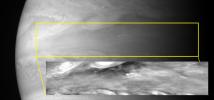
|
-
PIA10097:
-
Atmospheric Waves
Full Resolution:
TIFF
(1.302 MB)
JPEG
(40.26 kB)
|

|
2007-10-09 |
Jupiter
|
New Horizons
|
MVIC
|
761x1843x3 |

|
-
PIA10098:
-
Atmospheric Structure
Full Resolution:
TIFF
(4.213 MB)
JPEG
(147.7 kB)
|

|
2008-02-28 |
Io
|
New Horizons
|
MVIC
|
600x300x3 |
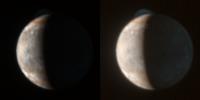
|
-
PIA10249:
-
Seeing Red
Full Resolution:
TIFF
(540.8 kB)
JPEG
(8.52 kB)
|

|
2013-12-11 |
Europa
|
Galileo
|
Near Infra-Red Mapping Spectrometer
|
1601x800x3 |
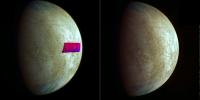
|
-
PIA17658:
-
Clay Prints on Europa
Full Resolution:
TIFF
(3.844 MB)
JPEG
(97.92 kB)
|

|
1996-08-09 |
Europa
|
Voyager
|
Near Infrared Camera
|
1500x2000x3 |

|
-
PIA00366:
-
Europa - Mosaic
Full Resolution:
TIFF
(3.213 MB)
JPEG
(223.4 kB)
|

|
1998-03-26 |
Ganymede
|
Galileo
|
Near Infrared Mapping Spectrometer
|
1950x1500x3 |
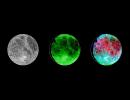
|
-
PIA00500:
-
NIMS Ganymede Surface Map
Full Resolution:
TIFF
(1.156 MB)
JPEG
(170.1 kB)
|

|
1998-03-26 |
Jupiter
|
Galileo
|
Near Infrared Mapping Spectrometer
|
233x506x3 |

|
-
PIA00501:
-
NIMS Spectral Maps of Jupiter's Great Red Spot
Full Resolution:
TIFF
(261.8 kB)
JPEG
(14.41 kB)
|

|
1998-03-26 |
Io
|
Galileo
|
Near Infrared Mapping Spectrometer
|
1900x1300x3 |
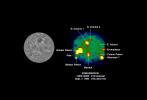
|
-
PIA00520:
-
NIMS: hotspots on Io during G2
Full Resolution:
TIFF
(541 kB)
JPEG
(103.4 kB)
|

|
1998-03-26 |
Jupiter
|
Galileo
|
Near Infrared Mapping Spectrometer
|
1000x800x3 |
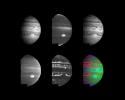
|
-
PIA00582:
-
Jupiter's Multi-level Clouds
Full Resolution:
TIFF
(415.2 kB)
JPEG
(39.65 kB)
|

|
1998-03-26 |
Europa
|
Galileo
|
Near Infrared Mapping Spectrometer
|
1279x676x3 |
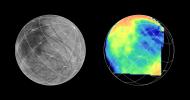
|
-
PIA00834:
-
NIMS G1 Observation of Europa
Full Resolution:
TIFF
(537.6 kB)
JPEG
(80.6 kB)
|

|
1998-03-26 |
Io
|
Galileo
|
Near Infrared Mapping Spectrometer
|
1525x1100x1 |
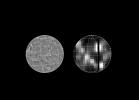
|
-
PIA00835:
-
NIMS Observation of Hotspots on Io
Full Resolution:
TIFF
(178 kB)
JPEG
(74.71 kB)
|

|
1998-03-26 |
Io
|
Galileo
|
Near Infrared Mapping Spectrometer
|
1525x1100x3 |
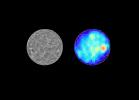
|
-
PIA00836:
-
Hotspots on Io During the Ganymede 2 Encounter
Full Resolution:
TIFF
(460.5 kB)
JPEG
(86.37 kB)
|

|
1998-03-26 |
Jupiter
|
Galileo
|
Near Infrared Mapping Spectrometer
|
1300x900x3 |
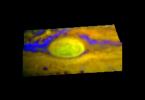
|
-
PIA00838:
-
First Near Infrared Mapping Spectrometer (NIMS) Image of the Great Red Spot
Full Resolution:
TIFF
(1.043 MB)
JPEG
(38.36 kB)
|

|
1998-03-26 |
Callisto
|
Galileo
|
Near Infrared Mapping Spectrometer
|
1065x863x3 |
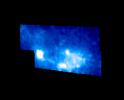
|
-
PIA00839:
-
Callisto Asgard Region as Viewed by NIMS
Full Resolution:
TIFF
(61.68 kB)
JPEG
(36.83 kB)
|

|
1998-06-17 |
Europa
|
Galileo
|
Near Infrared Mapping Spectrometer
|
820x470x1 |
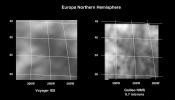
|
-
PIA00840:
-
Infrared Observations of Europa's Trailing Side
Full Resolution:
TIFF
(94.4 kB)
JPEG
(29.74 kB)
|

|
1998-03-26 |
Io
|
Galileo
|
Near Infrared Mapping Spectrometer
|
1300x850x3 |
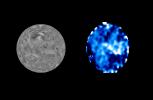
|
-
PIA00841:
-
Distribution of Sulfur Dioxide Frost on Io
Full Resolution:
TIFF
(173.2 kB)
JPEG
(60.06 kB)
|

|
1998-03-26 |
Jupiter
|
Galileo
|
Near Infrared Mapping Spectrometer
|
900x800x3 |
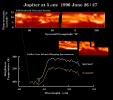
|
-
PIA00842:
-
Observations of Jupiter's thermal emission made by the Infrared Telescope Facility and the Galileo NIMS instrument
Full Resolution:
TIFF
(100.3 kB)
JPEG
(72.46 kB)
|

|
1998-03-26 |
Ganymede
|
Galileo
|
Near Infrared Mapping Spectrometer
|
1143x635x3 |
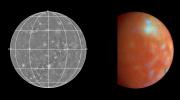
|
-
PIA00844:
-
NIMS Callisto Global Mosaic
Full Resolution:
TIFF
(934.2 kB)
JPEG
(63.81 kB)
|

|
1998-03-26 |
Io
|
Galileo
|
Near Infrared Mapping Spectrometer
|
1600x1300x3 |
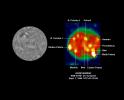
|
-
PIA00845:
-
NIMS: hotspots on Io during G2 (continued)
Full Resolution:
TIFF
(632.6 kB)
JPEG
(108.9 kB)
|

|
1998-03-26 |
Europa
|
Galileo
|
Near Infrared Mapping Spectrometer
|
1650x1950x1 |

|
-
PIA00846:
-
NIMS E4 Observations of Europa Trailing Hemisphere
Full Resolution:
TIFF
(661 kB)
JPEG
(122.3 kB)
|

|
1998-03-26 |
Jupiter
|
Galileo
|
Near Infrared Mapping Spectrometer
|
1000x800x3 |
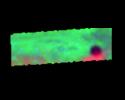
|
-
PIA00847:
-
NIMS Observes Europa's Shadow
Full Resolution:
TIFF
(636.5 kB)
JPEG
(25.2 kB)
|

|
1998-03-26 |
Jupiter
|
Galileo
|
Near Infrared Mapping Spectrometer
|
700x900x1 |

|
-
PIA00848:
-
NIMS Views of a Jovian "Hot Spot"
Full Resolution:
TIFF
(106.1 kB)
JPEG
(19.02 kB)
|

|
1998-03-26 |
Europa
|
Galileo
|
Near Infrared Mapping Spectrometer
|
1000x800x1 |
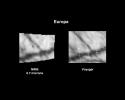
|
-
PIA00853:
-
Europa 6th Orbit NIMS Data
Full Resolution:
TIFF
(103 kB)
JPEG
(28.36 kB)
|

|
1998-03-26 |
Ganymede
|
Galileo
|
Near Infrared Mapping Spectrometer
|
1588x762x3 |
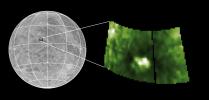
|
-
PIA00854:
-
Antum Crater
Full Resolution:
TIFF
(1.075 MB)
JPEG
(96.9 kB)
|

|
1998-03-26 |
Europa
|
Galileo
|
Near Infrared Mapping Spectrometer
|
1326x863x3 |
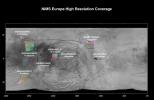
|
-
PIA00855:
-
High Spatial Resolution Europa Coverage by the Galileo Near Infrared Mapping Spectrometer (NIMS)
Full Resolution:
TIFF
(869.3 kB)
JPEG
(98.64 kB)
|

|
1998-03-26 |
Io
|
Galileo
|
Near Infrared Mapping Spectrometer
|
1017x635x3 |
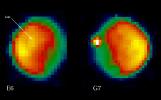
|
-
PIA00856:
-
NIMS Observes Increased Activity at Loki Patera, Io
Full Resolution:
TIFF
(912.3 kB)
JPEG
(40.86 kB)
|

|
1998-03-26 |
Ganymede
|
Galileo
|
Near Infrared Mapping Spectrometer
|
445x525x1 |

|
-
PIA00878:
-
NIMS Observes Melkart Crater on Ganymede
Full Resolution:
TIFF
(21.67 kB)
JPEG
(17.45 kB)
|

|
1998-03-26 |
Io
|
Galileo
|
Near Infrared Mapping Spectrometer
|
2200x1700x3 |
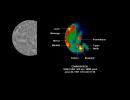
|
-
PIA00899:
-
New Hot Spot on Io Discovered by NIMS During Orbit C9
Full Resolution:
TIFF
(783.9 kB)
JPEG
(130.5 kB)
|

|
1997-11-17 |
Callisto
|
Galileo
|
Near Infrared Mapping Spectrometer
|
900x850x3 |
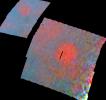
|
-
PIA01078:
-
Callisto's Southern Hemisphere
Full Resolution:
TIFF
(807.7 kB)
JPEG
(96.79 kB)
|

|
1997-11-17 |
Callisto
|
Galileo
|
Near Infrared Mapping Spectrometer
|
1800x1700x3 |
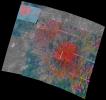
|
-
PIA01079:
-
Callisto's Southern Hemisphere as Viewed by NIMS & SSI
Full Resolution:
TIFF
(5.516 MB)
JPEG
(418.8 kB)
|

|
1998-03-26 |
Jupiter
|
Galileo
|
Near Infrared Mapping Spectrometer
|
712x725x3 |

|
-
PIA01224:
-
NIMS Observes the Structure and Composition of Jupiter's Clouds
Full Resolution:
TIFF
(33.81 kB)
JPEG
(75.03 kB)
|

|
1998-03-26 |
Io
|
Galileo
|
Near Infrared Mapping Spectrometer
|
1225x935x3 |
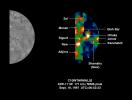
|
-
PIA01226:
-
Two New Hot Spots on Io
Full Resolution:
TIFF
(307.3 kB)
JPEG
(67.14 kB)
|

|
1999-09-30 |
Europa
|
Galileo
|
Near Infrared Mapping Spectrometer
|
837x796x3 |
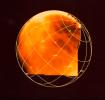
|
-
PIA02500:
-
Sulfuric Acid on Europa
Full Resolution:
TIFF
(1.208 MB)
JPEG
(55.43 kB)
|

|
1999-11-04 |
Io
|
Galileo
|
Near Infrared Mapping Spectrometer
|
959x581x3 |
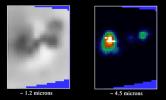
|
-
PIA02509:
-
Galileo's Near-Infrared Mapping Spectrometer Detects Active Lava Flows at Prometheus Volcano, Io
Full Resolution:
TIFF
(67.96 kB)
JPEG
(35 kB)
|

|
1999-11-19 |
Io
|
Galileo
|
Near Infrared Mapping Spectrometer
|
1157x1241x3 |

|
-
PIA02514:
-
Loki as viewed by Galileo NIMS
Full Resolution:
TIFF
(638.9 kB)
JPEG
(92.45 kB)
|

|
1999-11-19 |
Io
|
Galileo
|
Near Infrared Mapping Spectrometer
|
1157x841x3 |
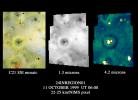
|
-
PIA02515:
-
Io's Prometheus Regions as Viewed by Galileo NIMS
Full Resolution:
TIFF
(870 kB)
JPEG
(76.75 kB)
|

|
1999-11-19 |
Io
|
Galileo
|
Near Infrared Mapping Spectrometer
|
841x631x3 |
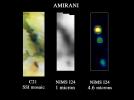
|
-
PIA02516:
-
Galileo NIMS Observes Amirani
Full Resolution:
TIFF
(274.2 kB)
JPEG
(34.6 kB)
|

|
1999-12-17 |
Io
|
Galileo
|
Near Infrared Mapping Spectrometer
|
800x400x3 |
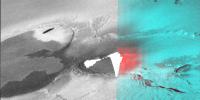
|
-
PIA02521:
-
Eruption from High Latitude Caldera Viewed by the Near-Infrared Mapping Spectrometer (NIMS)
Full Resolution:
TIFF
(482.4 kB)
JPEG
(46.98 kB)
|

|
2000-04-19 |
Europa
|
Galileo
|
Near Infrared Mapping Spectrometer
|
700x600x3 |
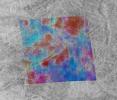
|
-
PIA02529:
-
Europa: Sea Salts or Battery Acid
Full Resolution:
TIFF
(976.3 kB)
JPEG
(64.07 kB)
|

|
2000-05-18 |
Io
|
Galileo
|
Near Infrared Mapping Spectrometer
|
1000x1200x3 |

|
-
PIA02541:
-
Loki Patera/NIMS
Full Resolution:
TIFF
(639.3 kB)
JPEG
(78.9 kB)
|

|
2000-05-18 |
Io
|
Galileo
|
Near Infrared Mapping Spectrometer
|
1192x784x3 |
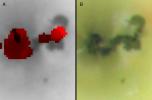
|
-
PIA02542:
-
Prometheus/NIMS
Full Resolution:
TIFF
(1.242 MB)
JPEG
(29.71 kB)
|

|
2000-05-18 |
Io
|
Galileo
|
Near Infrared Mapping Spectrometer
|
2000x2028x3 |

|
-
PIA02543:
-
Prometheus Silicates/Sulfur dioxide/NIMS
Full Resolution:
TIFF
(4.722 MB)
JPEG
(347.4 kB)
|

|
2000-05-18 |
Io
|
Galileo
|
Near Infrared Mapping Spectrometer
|
504x604x3 |

|
-
PIA02544:
-
Culann Patera/NIMS
Full Resolution:
TIFF
(478.6 kB)
JPEG
(16.82 kB)
|

|
2000-05-18 |
Io
|
Galileo
|
Near Infrared Mapping Spectrometer
|
661x556x3 |
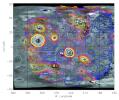
|
-
PIA02548:
-
Temperature Map of Io's Night Side
Full Resolution:
TIFF
(924.6 kB)
JPEG
(82.66 kB)
|

|
2000-05-18 |
Io
|
Galileo
|
Near Infrared Mapping Spectrometer
|
1060x767x3 |
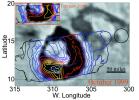
|
-
PIA02549:
-
Temperature Comparison at Loki
Full Resolution:
TIFF
(291.5 kB)
JPEG
(133.3 kB)
|

|
2000-05-31 |
Io
|
Galileo
|
Near Infrared Mapping Spectrometer
|
890x376x3 |
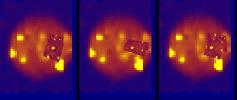
|
-
PIA02558:
-
Myriad of Hot Spots on Io
Full Resolution:
TIFF
(56.56 kB)
JPEG
(27.49 kB)
|

|
2000-05-31 |
Io
|
Galileo
|
Near Infrared Mapping Spectrometer
|
850x410x1 |
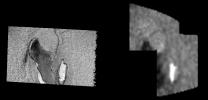
|
-
PIA02559:
-
Sulphur Dioxide on the Chaac Region of Io
Full Resolution:
TIFF
(145.7 kB)
JPEG
(35.13 kB)
|

|
2000-05-31 |
Io
|
Galileo
|
Near Infrared Mapping Spectrometer
|
1130x550x3 |
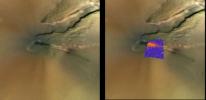
|
-
PIA02560:
-
Temperature Map of Pele, Io
Full Resolution:
TIFF
(1.376 MB)
JPEG
(57.62 kB)
|

|
2000-07-10 |
Europa
|
Galileo
|
Near Infrared Mapping Spectrometer
|
950x650x3 |
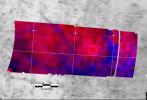
|
-
PIA02561:
-
Europa Impact Crater
Full Resolution:
TIFF
(904.6 kB)
JPEG
(55.73 kB)
|

|
2000-10-26 |
Jupiter
|
Galileo
|
Near Infrared Mapping Spectrometer
|
2769x1542x3 |
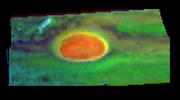
|
-
PIA02569:
-
Ammonia Ice near Jupiter's Great Red Spot
Full Resolution:
TIFF
(7.819 MB)
JPEG
(148.5 kB)
|

|
2001-10-04 |
Io
|
Galileo
|
Near Infrared Mapping Spectrometer
|
1152x576x3 |
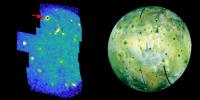
|
-
PIA02591:
-
Hot Spots on Io
Full Resolution:
TIFF
(806.2 kB)
JPEG
(73.93 kB)
|

|
2001-11-27 |
Io
|
Galileo
|
Near Infrared Mapping Spectrometer
|
468x620x3 |

|
-
PIA02594:
-
Io's Tvashtar Area in Infrared: Multiple Lava Flows
Full Resolution:
TIFF
(441.1 kB)
JPEG
(31.68 kB)
|

|
2001-11-27 |
Io
|
Galileo
|
Near Infrared Mapping Spectrometer
|
595x415x3 |
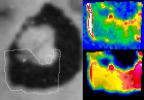
|
-
PIA02595:
-
Io's Loki in Infrared: Hot Edge
Full Resolution:
TIFF
(94.45 kB)
JPEG
(34.11 kB)
|

|
2002-05-28 |
Io
|
Galileo
|
Near Infrared Mapping Spectrometer
|
720x480x3 |
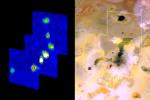
|
-
PIA03533:
-
Amirani Lava Flow on Io
Full Resolution:
TIFF
(606.9 kB)
JPEG
(34.96 kB)
|

|
2002-05-28 |
Io
|
Galileo
|
Near Infrared Mapping Spectrometer
|
816x600x3 |
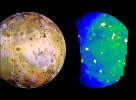
|
-
PIA03534:
-
Io in Infrared with Giant Plume's New Hot Spot
Full Resolution:
TIFF
(623.6 kB)
JPEG
(59.13 kB)
|

|
2002-05-28 |
Io
|
Galileo
|
Near Infrared Mapping Spectrometer
|
974x509x3 |
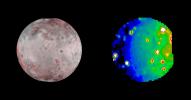
|
-
PIA03535:
-
Io in Infrared, Night and Day
Full Resolution:
TIFF
(312.2 kB)
JPEG
(36.39 kB)
|

|
2001-12-10 |
Io
|
Galileo
|
Near Infrared Mapping Spectrometer
|
740x340x3 |

|
-
PIA03601:
-
Io's Tupan Caldera in Infrared
Full Resolution:
TIFF
(501.9 kB)
JPEG
(36.29 kB)
|

|
2001-12-10 |
Io
|
Galileo
|
Near Infrared Mapping Spectrometer
|
540x360x3 |
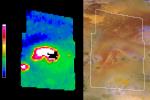
|
-
PIA03602:
-
A New Hot Spot on Northern Io
Full Resolution:
TIFF
(301.3 kB)
JPEG
(25.83 kB)
|

|
2013-04-12 |
Europa
|
Galileo
|
Near Infrared Mapping Spectrometer
|
3000x1401x3 |
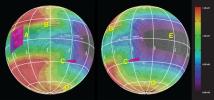
|
-
PIA16921:
-
Energy From Above Affecting Surface of Europa
Full Resolution:
TIFF
(12.61 MB)
JPEG
(479.9 kB)
|

|
2024-10-11 |
Europa
|
Galileo
|
Near Infrared Mapping Spectrometer
|
1062x1062x3 |
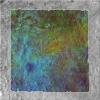
|
-
PIA26104:
-
Map of Water Signatures at Europa's Manannán Crater
Full Resolution:
TIFF
(3.385 MB)
JPEG
(289.1 kB)
|

|
2017-06-30 |
Jupiter
|
Juno
|
Near-InfraRed Imager (NIRI)
|
965x965x3 |
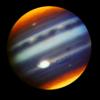
|
-
PIA21713:
-
Jupiter With Great Red Spot, Near Infrared, May 2017
Full Resolution:
TIFF
(1.759 MB)
JPEG
(222.5 kB)
|

|
2013-04-23 |
Jupiter
|
Herschel Space Observatory
|
PACS
|
1765x1716x3 |
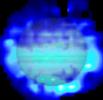
|
-
PIA17006:
-
Distribution of Water in Jupiter's Stratosphere
Full Resolution:
TIFF
(9.09 MB)
JPEG
(143.3 kB)
|

|
1997-09-23 |
Jupiter
|
Galileo
|
Photopolarimeter Subsystem
|
807x700x3 |
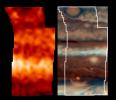
|
-
PIA00730:
-
Jupiter's Temperatures--Broad Latitude
Full Resolution:
TIFF
(1.011 MB)
JPEG
(42.99 kB)
|

|
1997-09-24 |
Jupiter
|
Galileo
|
Photopolarimeter Subsystem
|
585x376x3 |
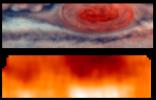
|
-
PIA00731:
-
Jovian Temperatures--Highest Resolution
Full Resolution:
TIFF
(447.1 kB)
JPEG
(17.9 kB)
|

|
1997-09-29 |
Jupiter
|
Galileo
|
Photopolarimeter Subsystem
|
875x605x3 |
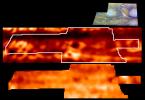
|
-
PIA00732:
-
Jupiter's Temperatures
Full Resolution:
TIFF
(771.1 kB)
JPEG
(49.91 kB)
|

 Planetary Data System
Planetary Data System


















































































































